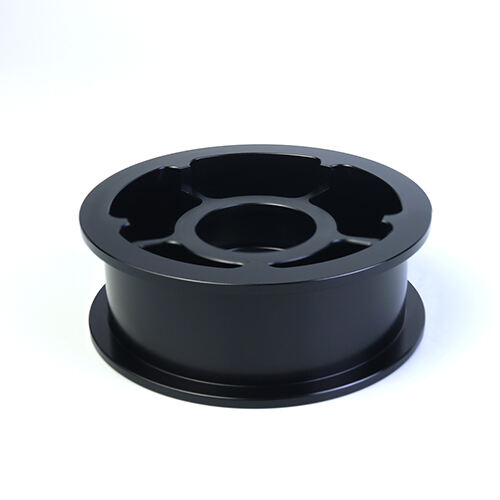How Custom CNC Machining is Shaping a New Era of Precision, Efficiency, and Innovation in Manufacturing
Manufacturing is undergoing a paradigm shift driven by demands for higher precision, faster turnaround, and greater flexibility. Custom CNC machining sits at the heart of this transformation, enabling manufacturers to produce highly complex parts with unprecedented accuracy and repeatability. In 2025, as industries increasingly adopt smart manufacturing and IoT-enabled systems, the role of advanced CNC technology has become more crucial than ever.

The Power of Precision: Why Custom CNC Machining Matters
At its core, custom CNC machining is all about delivering bespoke parts with unparalleled accuracy. Unlike mass-produced components, custom CNC-machined parts are tailored to meet the specific demands of each project, whether that’s intricate geometries or non-standard materials.
The ability to work with a wide range of materials—aluminum, steel, titanium, plastics, and even exotic alloys—makes CNC machining ideal for a variety of industries. With custom CNC machining, manufacturers can create parts that are:
• Perfectly aligned with design requirements
• Tightly controlled to meet precise tolerances
• Optimized for performance and durability
• Adaptable to evolving product specifications
Benefits of Custom CNC Machining: Why More Companies Are Choosing It
• Design Flexibility: Whether you're working on a prototype or full production, CNC machining offers the flexibility to adjust designs and meet the most unique specifications.
• Higher Quality: CNC machines can achieve tolerances in the micrometer range, ensuring parts are built to perfection every time.
• Cost-Effective for Low Runs: While traditional tooling methods can be expensive for small batches, custom CNC machining is cost-effective for short runs, making it perfect for startups and specialized manufacturers.
• Faster Turnaround Times: CNC machining reduces the production time, making it possible to go from concept to finished product faster than ever before.
Discussion
1. Interpretation of Outcomes
The high levels of precision and efficiency are largely attributable to advancements in CNC controller technology, real-time monitoring, and dynamic toolpath optimization. These allow for continuous adjustment during machining, minimizing errors and maximizing material removal rates.
2. Limitations
This study focused on common industrial materials and CNC configurations. Future research should explore the machining of advanced composites and ceramics, as well as the integration of AI-driven predictive maintenance.
3. Practical Implications
Manufacturers can leverage custom CNC machining to reduce waste, accelerate time-to-market, and offer more innovative products. Businesses that adopt these capabilities are better positioned to respond to market changes and customer demands for customization.
Industries Leading the Way
• Aerospace: Custom CNC machining is critical for manufacturing lightweight, high-strength components for aircraft. Turbine blades, fuel nozzles, and engine parts rely on the precision and reliability that CNC machining provides.
• Medical: In the medical field, precision is life-saving. Custom CNC machining is used to create customized surgical tools, implants, and prosthetics that fit individual patients’ needs perfectly.
• Automotive: With the rise of electric vehicles (EVs), custom CNC machining is helping automotive manufacturers create parts that meet the unique performance and aesthetic demands of next-generation vehicles.
• Consumer Electronics: From smartphones to drones, the tech industry depends on CNC machining to manufacture complex components that perform reliably while maintaining sleek, compact designs.
Conclusion
Custom CNC machining is proving to be a cornerstone of modern manufacturing, offering significant gains in precision, efficiency, and design flexibility. As the technology continues to evolve—with trends like digital twins, hybrid manufacturing, and smarter CNC systems gaining traction—its impact will only grow. Companies investing in these capabilities today will lead the next wave of industrial innovation.


